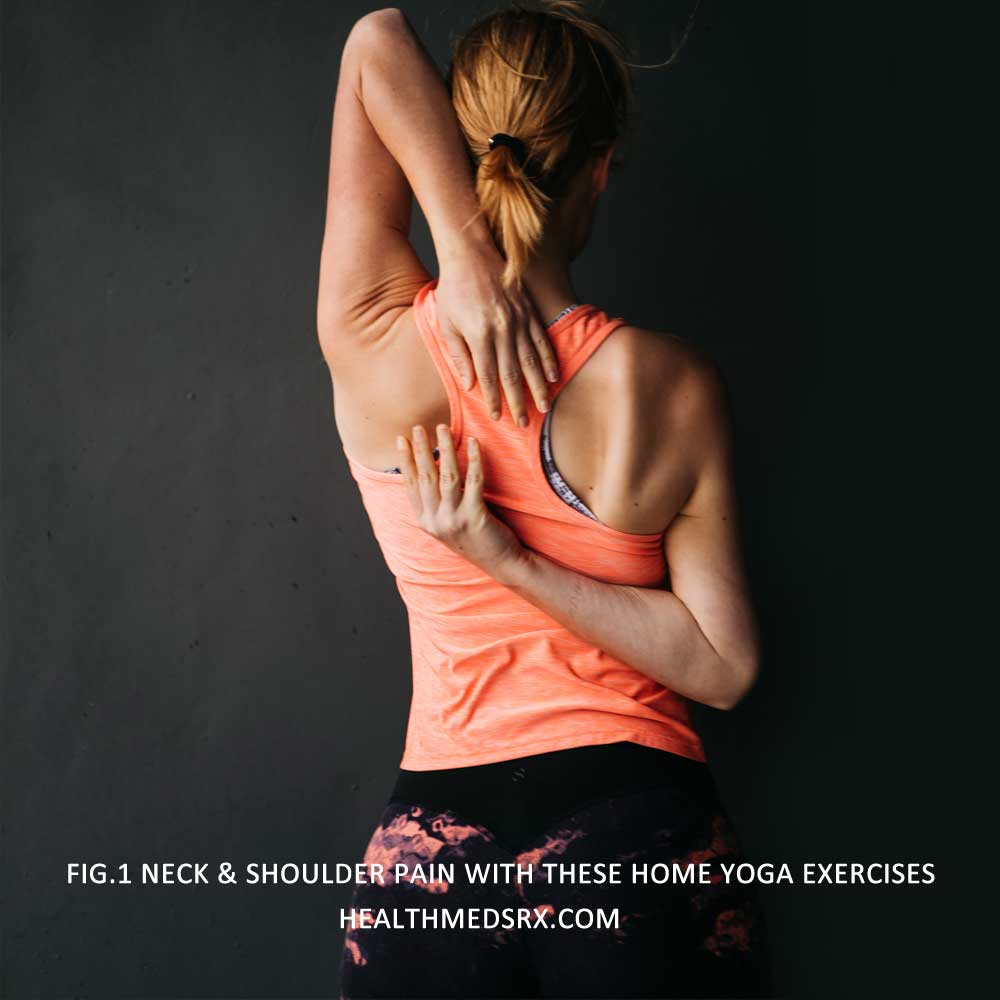It can be difficult to manage neck and shoulder pain, but happily, yoga can assist. Yoga is an excellent way to stretch and strengthen your muscles while also reducing stress, which is a common cause of persistent neck and shoulder pain. Practicing yoga exercises at home has numerous advantages: it is practical, cost-effective, and allows you to practice in a relaxing setting free of interruptions. You may relieve your neck and shoulder discomfort from the comfort of your own home with the appropriate yoga exercises!
Warm-up Yoga Exercises
It is important to warm up before engaging in yoga to avoid injury and to ensure that your muscles are ready to move. Begin by gently rolling your shoulders back and forth to loosen the muscles. Next, rotate your neck, moving your head clockwise and counter clockwise to increase the range of motion. You can also try shoulder shrugs, raising your shoulders toward your ears and then dropping them. Additionally, neck stretches, such as gently tilting your head to each side or back and forth, can help relieve tension. Remember to go slowly and avoid any movement that causes pain or discomfort. As always, consult a healthcare professional if the pain persists or worsens.
Stretches & Yoga Exercises
Thread The Needle Pose is excellent for stretching the neck and shoulders. Begin by reclining back and drawing both knees into your chest. Slowly raise one arm above your head, keeping it near to your ear and your shoulder blades deep into the mat. Take hold of the opposite elbow and pull your raised arm underneath you as you move it to the opposite side of your body until you feel a comfortable stretch on either side of your neck or upper back. Hold this stance for 15-30 seconds before switching sides.
Another pose that helps release tension in the neck, shoulders, and arms at the same time is Eagle Pose! Begin by standing tall, then gently cross one arm over the top of the other, crossing them at least twice if feasible while flexing each bicep towards its respective shoulder joint region for added difficulty.
Wrap each hand around its corresponding forearm so that they form an eagle beak shape with palms firmly pressed together while lifting elbows high and away from any direct contact with any part of the torso area below chin level raise onto tip toes if desired but not required finish by holding this posture for 5-10 breaths before releasing arms down reversed sequence being mindful not to allow hands separate too quickly during unwrapping process repeat same steps with opposite limbs for optimal results
Strength & Yoga Exercises
Downward-Facing Dog is an excellent pose for strengthening the neck, shoulders, and arms. To do it, start on your hands and knees with wrists directly below your shoulder joints. As you exhale, press your hands together, raising your hips to the sky and straightening your legs as far as possible until they’re parallel to the mat. If necessary, keep your knees slightly bent to avoid hurting any muscles or ligaments, but strive for maximal length in each arm and leg for the full downward dog movement. Hold this pose for 5-10 breaths before slowly returning to hands and knees, finishing one round of this posture practice several rounds if required for increased strength gains
Cobra pose is one of the best effective yoga exercises for relieving neck and shoulder pain. Begin by lying on your stomach, placing your hands next to your shoulders. Inhale and lift your chest off the ground while keeping your lower body grounded. Gently arch your back and look upward. Hold the pose for a few breaths and exhale as you slowly release back down. This gentle backbend can help stretch and strengthen the muscles in your neck and shoulders. As with any exercise, listen to your body and avoid overexertion or any movements that cause discomfort.
Relaxation Techniques for Yoga Exercises
Various relaxation techniques can help alleviate neck and shoulder pain. Deep breathing exercises, like diaphragmatic breathing, can promote relaxation and reduce muscle tension. Progressive muscle relaxation involves systematically tensing and releasing different muscle groups to promote overall relaxation. Mindfulness meditation and guided imagery can also help redirect attention away from pain and promote a sense of calm. Additionally, applying heat or cold packs to the affected areas and getting regular massages can provide further relief. Experiment with different techniques and find what works best for you in managing neck and shoulder pain.
Why yoga exercises are best?
In conclusion, incorporating various techniques and Yoga Exercises can be beneficial in managing neck and shoulder pain. From gentle stretches and yoga poses to relaxation techniques and heat or cold therapy, there are multiple options to explore. Remember to listen to your body, go at your own pace, and consult a healthcare professional if the pain persists or worsens.


